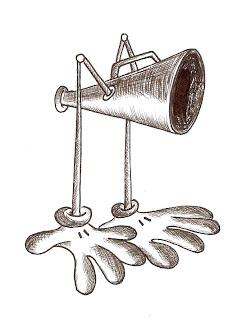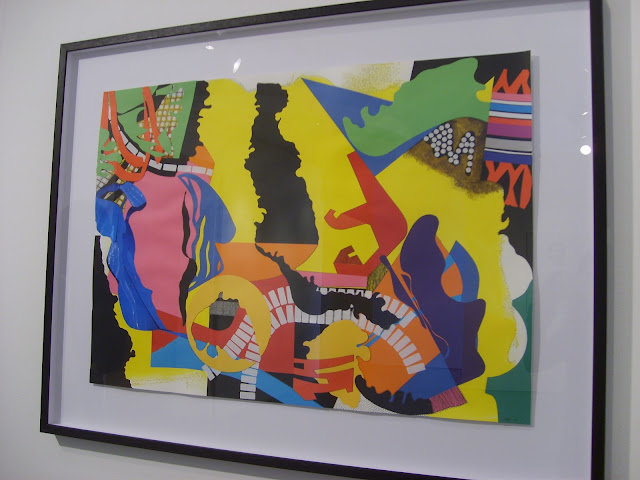This week
sees the opening of Plymouth University’s MA degree show in Peninsula Arts. It
features selected work across the MA programmes from Photography, Digital Art
and Technology, Communication Design, Three Dimensional Design, Architecture,
Creative Writing, and Fine Art; my own
work amongst the latter. Of course, I am pleased, in fact, delighted to have
recently achieved my MA in Fine Art alongside my peers and I am equally proud
of the exhibition and opportunities it has given as a whole, but when it comes
to my own work in the exhibition I have my inhibitions which I aim to cathartically
elaborate on in this week’s blog post and use it as a way of thinking through
some of my recent thoughts on my MA Fine Art practice. Whilst I appreciate it
may be more self-reflective than the usual posts on here, I hope that in my
debate it also raises and presents some questions that may reflect the
experiences of other artists reading this blog.
Below are some images showing a series of drawings I created for my MA.
My MA project enquired into, ‘how do we know tools’ through embodied and pragmatic processes of using them. In the ‘Tudiculation’ drawings (pictured) different types of hammers (pin/claw/mallet) have been used to pound 16 grams of carbon (representative of the 16kg of carbon in the human body) to create a drawing and indexical trace of the hammer. Capturing both a moment in time and the action of using the tool these drawings become an embodied record of a ‘drawing out’. The marks themselves in the drawings suggest a tool or man-made object has been used to bruise or pound (aka tudiculate) but whether the viewer is aware or not that the drawings have been made with a hammer is irrelevant. I hope that in speculating what made the marks it also questions the wider concept of ‘what is a tool’ and the viewers own experiences of using them.
I won’t go
into an overtly long synopsis of my written project report that documented,
discussed and contextualised this work in further depth but taking that aside
and making a critique of the physical work itself I’d say, on the face of it,
it’s not terrible but neither is it breathtakingly original or exciting and is
way too ‘serious of itself’ in my opinion. Interestingly, if it had been anyone
else’s work I probably wouldn’t be so harsh on it. Double standards? (Or that I
am a harsher critic of my own work than I am over other people?) I maintain
that my process and reasoning behind this work is sincere, however my problem with
the work is that I hated making it. I didn’t enjoy it and have never made work
that was so joyless and a discrepancy against everything that makes my work, my
own. So much so, it is a release to be able to at last express my opinion
openly without it causing risk of compromising my proposed outcomes and
intentions. To reveal this crisis of conscious throughout making the work would
have resulted in never completing it. “Fine,” you might say, “why not stop
making it if it’s such a problem.” Yes, all very well, but then I’d never be
completing what I started, never answering what I had proposed to do and
possibly in never completing my MA. In other words I was trapped in a creation
of my own doing that I had to see through to the end even if that meant challenging
my integrity in order to do it. In terms
of personal development it may have had some success, and that completing my
objectives and coming to a conclusion of my findings were all the ‘right’
things to do. Certainly it also kept to its justification and methods on a conceptual
level, but I had always hoped that an MA would result in a sense of
accomplishment and realisation of ‘what sort of artist am I?’ that I could be
proud of, instead, I feel I’ve learnt an entirely new perspective on art and my
own practice with the urge to move completely away from the work I had made
during the process and start anew. Exactly. What sort of artist does that make me? In what has been an infuriating and
emotionally painful process I could now ‘emerge’ to actually learn from it and
come out more positive as a result of it?...Weird! And that is what stems into
my question for this blog post, is a love for what you are doing important or
integral to making artwork? Is integrity also important? Is it possible to make
work and not care about it?
As usual
with art, I do not doubt that the answer to these questions is most likely to
be subjective. But is it?? Even the most business-driven artists like Hirst and
Warhol must have at least believed in what they were doing, thought it was cool
and/or enjoyed it? Even when they were deliberately taking the piss, they were
doing so knowingly because they wanted to, in a slightly contradictory way that
still showed its own form of integrity.
On the
other side of this question one could argue, that love and sentiment can get in
the way of developing or challenging ones practice, prevent it from moving
forward. Which I can kind-of agree with and if I can glean one positive from
this work, from MA practice it’s that undergoing these difficult changes,
decisions and moments of doubt and insecurity have perhaps opened my mind into
learning more about art than I may have ever done had I continued to stay
within familiarity.
Besides,
there was just about one piece that I felt did retain its integrity and that
piece is pictured below, titled ‘Tool Chest’.
Maybe if
anything this all puts into question my feelings towards the institution of art
practice and education than it does of art itself and that whilst at BA level
the treatment of practice and theory is more holistic and broader at MA level the
cerebral minded verbosity for the sake of verbosity, for me, got in the way of
the process of making art, on its positive aspects it enhanced analytical and
reflective thinking and the ability to use theory to contextualise practice in
more depth but on the negative, this came at a cost of stifling the creativity
and spontaneity of making the actual work. Although, oddly, I do not regret
undergoing this process for at least it feels better to have experienced both.
I will never have aspirations to fill my own practice ever again with the
extent of theory that I did on the MA (I am not an academic) but neither will I
go on a purely self-indulgent creating spree that lacks purpose or meaning.
Ideally, I will aspire to fit somewhere between the two and feel that it is the
work that I may go on to make next, post-MA that will most accurately and truly
define my beliefs and what I have learnt and what I have chosen to leave
behind.
Whilst the
success/failure of the work exhibited at Plymouth may/may not be measured by my
audience on whether they believe in its integrity or not or whether they care
if its maker enjoyed making it; for me, knowing my heart wasn’t in it will
always get in the way of any reading of the work. Whether love seemingly may
have or have nothing to do with art may also be a romantic sentiment that I
may/may not share with others depending on every individuals view, but in terms
of a motivating force, to love what you are doing still seems of underlying
importance if not imperative to ‘making’ work. This isn’t an argument between
the expressive vs. the conceptual ways of working as quite honestly I cannot
comprehend what, other than one’s own thoughts, reactions or emotions does
motivate? You cannot be motivated by an idea, only the desire to see that idea
be made reality and desire is born out of a passion, a want, a need which are
all emotive. Even the most scientific of artists are motivated by curiosity in
the first instance, whether or not those artists then choose to reveal or
conceal themselves within their work is up to them, however I strongly feel
that intuition, ‘gut-intsinct’, spontaneity and one’s feelings towards making
work are only to be ignored at ones peril.
So what
has love got to do with it? Well, if making art, then I still believe it has
everything to do with it.
And what
next? For those of you that know me, and if interested, then perhaps this will
allude to the answer...
“His creative intelligence, stifled by too much theory and too many grades in college, would now become reawakened by the boredom of the shop.*”
Amen!
*Zen
and the Art of Motorcycle Maintenance by Robert M Pirsig
















